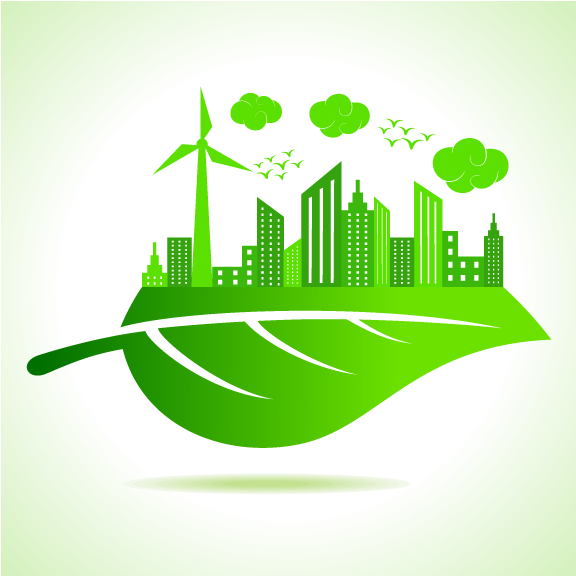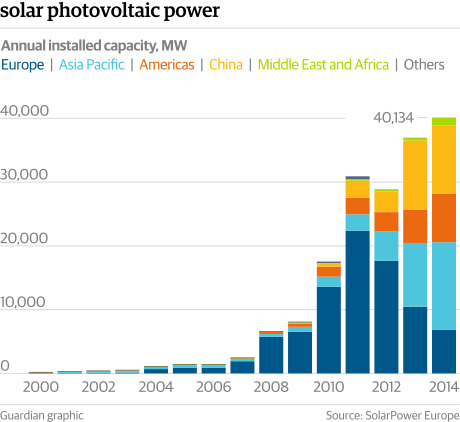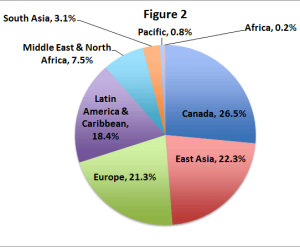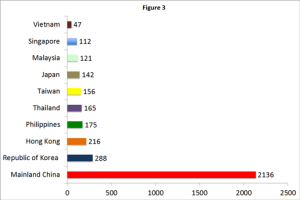The increasing importance of green building certification
 While Beijing was issuing its very first pollution ‘red alert’ in early December 2015, around 190 world-leaders were sat around a negotiating table in Paris planning how to alleviate the planet’s climate problems. During the COP21 summit, President Xi Jinping pledged to decrease China’s carbon dioxide (CO2) emissions and announced China’s target of making non-fossil fuels a primary energy source. Kent Zaitlik and Selena Mranata of Bisagni Environmental Enterprise (BEE) says that China’s aggressive sustainability policies and increase in renewable energy projects and green building practices suggests that these are not just empty promises.
While Beijing was issuing its very first pollution ‘red alert’ in early December 2015, around 190 world-leaders were sat around a negotiating table in Paris planning how to alleviate the planet’s climate problems. During the COP21 summit, President Xi Jinping pledged to decrease China’s carbon dioxide (CO2) emissions and announced China’s target of making non-fossil fuels a primary energy source. Kent Zaitlik and Selena Mranata of Bisagni Environmental Enterprise (BEE) says that China’s aggressive sustainability policies and increase in renewable energy projects and green building practices suggests that these are not just empty promises.
Scaling the Great Wall towards improved air quality
China plans to fully implement its Emissions Trading Scheme (ETS) in the next two years for the power generation, iron and steel, chemicals, building materials, paper production, and non-ferrous metals industries.
Within the power generation sector, China possessed the world’s largest solar market in 2014, with a total grid-connected solar power capacity of 28.05 GW, a 60 per cent increase from 2013. In the same year, 10.6 GW of their photovoltaic (PV) power was connected to the grid.
 Growth in PV power demand has led several companies to initiate unique platforms that facilitate PV employment. One such model that has proved to be successful is the purchasing power agreement (PPA) scheme, a financial agreement whereby a developer arranges the design, financing and installation of a solar energy system on a customer’s property at little to no cost. The developer then sells the electricity to the host user (customer) at a fixed rate usually lower than the local utility’s rate, saving the customer money while providing clean energy as well as receiving a healthy return on their investment.
Growth in PV power demand has led several companies to initiate unique platforms that facilitate PV employment. One such model that has proved to be successful is the purchasing power agreement (PPA) scheme, a financial agreement whereby a developer arranges the design, financing and installation of a solar energy system on a customer’s property at little to no cost. The developer then sells the electricity to the host user (customer) at a fixed rate usually lower than the local utility’s rate, saving the customer money while providing clean energy as well as receiving a healthy return on their investment.
China plans to spend at least CNY 2 trillion to improve its power grid infrastructure from 2015 to 2020. However, while generating renewable energy to replace industrial coal burning will certainly help improve China’s air quality, introducing emission-reducing opportunities through the employment of sustainable building strategies may actually hold even greater potential.
Sustainable building and its role in China
A sustainable building is one that has been constructed using materials and processes that are environmentally responsible and resource-efficient. It is crucial that China pursues this kind of construction, not only due to its grave pollution problems but also as it possesses the world’s largest construction industry, in which further extensive growth is anticipated.
In 2006, China established their own green building standard, the Green Building Evaluation Label (GBEL), to drive sustainable building practices. This, and the Leadership in Energy and Environmental Design (LEED) established by the US Green Building Council (USGBC), now serve as the two most prevalent green standards in China. So far, China has been awarded 3,165 green building certifications and has gained the title of the second largest international LEED-user nation. There are even three economic zones, located in Tianjin and Beijing, which focus on forming policies and providing subsidies for LEED projects. In addition, China has mandated that 30 per cent of its newly-constructed projects are to be green-building certified by 2020.
Green building certification: moving towards results, health and wellness
The increase in global green-building practices has led to the establishment of several novel sustainability standards, the most prevalent of these being Regenerative Ecological, Social and Economic Targets (RESET), WELL and LEEDv4. These innovative certification systems illustrate the change that is beginning to take place within the green building industry, shifting from a platform of instructive implementation to one centred on data-backed results and human health.
Focused on both the health of its occupants and result-based measures, RESET was designed to ensure that the material composition of a building’s interior space meets low volatile organic compound (VOC) requirements while establishing high indoor air quality (IAQ) standards within five parameters – particulate matter (PM) 2.5, total carbon emissions (TVOC), CO2, temperature and humidity. While spaces that are RESET-certified are beginning to take shape across the globe, they are particularly prevalent in cities across China, such as Beijing, Shanghai, Suzhou and Chengdu, and are being adopted by some of the world’s largest corporations.
The WELL Building Standard focuses on implementing prescriptive and technological measures across seven categories that directly impact people’s physical and mental health. Although it was only established in November 2014, WELL has already certified a total of 300 projects worldwide. Again, China is among the chief adopters and is currently in the process of certifying seven projects.
As the most widely used green building certification, LEED is being upgraded from v2009 to v4, which will be mandatory by 16th October, 2016. Currently, there are 10 projects in China that have been certified LEEDv4, with many more registering for the designation. The main differences between these two LEED versions are within the materials and building management sectors. An increase in selectivity of green building materials has led to the emergence of informative material-management software that caters to various project types. One such cloud-based software that is beginning to take shape in China is MATTER, which optimises material searches and material documentation to offer a seamlessly integrated solution for material management, allowing firms and organisations to communicate design and corporate visioning while setting measurable material specification and project budget goals for evaluation and benchmarking. Building on this platform, MATTER is beginning to combine IAQ data and real-time, on-site monitoring to allow firms to easily specify and track low-emitting materials and demonstrate healthy IAQ levels, which may result in RESET Certification.
Much innovation is also happening in furthering the efficiency of buildings’ operations. The USGBC has developed the LEED Dynamic Plaque, a tool that constantly monitors key parameters, including energy, water, waste, transportation and human experience, to determine the level of operational impact of a particular building. This tool will be a central part of a project’s operations and became a requirement for achieving LEED certification on 1st January, 2016.
Green building users
The Chinese stakeholders who are most interested in sustainable buildings are real estate developers. They are investing significantly in projects with commercial, residential, retail and mixed-used purposes. Dalian Wanda Group, CBRE, SOHO China, Jiaming Investment and Hang Lung Properties are a few of the major players. The Wanda group in particular has already attained 322 green certifications with 2.5 million square metres of LEED-certified space. They plan to pursue LEED certifications for their ongoing 14 projects and upcoming malls.
The USGBC recently announced their collaboration with Beijing-based Shougang, one of China’s largest steel companies and a Fortune 500 firm. This partnership entails the incorporation of LEED, WELL and several other green certifications to transform an old factory site, which spans over 863 hectares, into a mixed-use development. Shougang has 20 other similar projects ongoing in China.
Passing the threshold
Beyond merely employing design and technological methods to reduce energy consumption, the green building market is moving along two apparent trajectories – one that prioritises individuals’ physical and mental health and another that focuses on the operation of the building through monitoring systems such as the LEED Dynamic Plaque and RESET’s air monitoring platform. News about certification and project updates reflect an increase in green building projects in various parts of the world, with East Asia being at the forefront of this development (Fig.2) and China leading the pack with 2,136 LEED certified projects (Fig. 3).
That being said, Beijing’s recent red alert reflects the substantial amount of action that is still needed if a noticeable impact on improving China’s air quality is to be realised. With increased education on sustainability and the related lowering of costs, China should establish enough renewable energy operations and green buildings to surpass the threshold that will go towards producing an environmentally positive impact. Construction of buildings that are mindful of environmental degradation and the world’s finite resources is one clear measure that is able to counter the detrimental effects of China’s rapid urbanisation.
Bisagni Environmental Enterprise (BEE) is an engineering consultancy and material specialist focusing on sustainability for the built environment. BEE excels in MEP engineering and simulations primarily focusing on energy, lighting, thermodynamics, acoustical models and occupants’ health and well-being, as well as certifying projects with LEED, HK BEAM, GBEL, RESET, and WELL certifications. We currently have projects in 23 countries and are proud to be furthering sustainability strategies worldwide.




That’s a really great post! By adopting green techniques in construction we make a huge step towards the protection of our planet. No matter the cost, green construction is the way to go I believe. In that sense, we published today a quite descriptive article about the importance of green construction. Take a look below and offer us your feedback
https://geniebelt.com/blog/what-is-green-construction